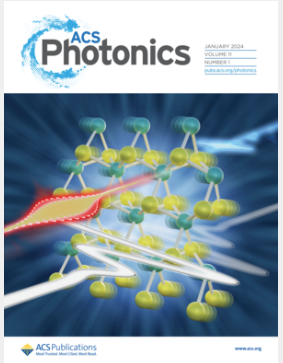Multiplexed Near-IR Detection of Single-Molecule Fluorescence Fluctuations Using a Single Superconducting Nanowire Single-Photon Detector
IF 6.5
1区 物理与天体物理
Q1 MATERIALS SCIENCE, MULTIDISCIPLINARY
引用次数: 0
Abstract
Fluorescence-based single-molecule and fluctuation spectroscopy in the near-IR can open avenues for biomolecular dynamic studies in biological media with suppressed autofluorescence and scattering background. However, further implementation is limited by the lower brightness of NIR fluorophores and available single-photon detector technologies that are still to be explored and adapted. Superconducting nanowire single-photon detectors (snSPDs) have found increasing use in quantum optics and optical communication applications thanks to high sensitivity in the near-infraed (NIR), low dark-counts, no after-pulsing, and high time resolution. Here, we present characterization of fluorescence intensity fluctuations from single vesicles and NIR fluorophores based on fluorescence correlation spectroscopy (FCS), specifically taking advantage of these snSPD properties. We present a concept allowing multiplexed readouts based on only one snSPD, in which the emitted photons are separated by their emission wavelength into different optical paths, thereby translating the emission wavelengths into different arrival times onto the snSPD. This concept allows one-laser-one-detector, dual-color fluorescence cross-correlation spectroscopy (FCCS) measurements, with fluorescence intensity fluctuations of two fluorophore species separately analyzed and cross-correlated. It is shown how two fluorophore species in a sample can be distinguished by their different blinking kinetics, fluorescence lifetimes, and/or diffusion properties. Apart from differences in emission spectra, the presented concept for multiplexing using a single detector can also be applied to distinguish emitters by properties such as polarization, coherence lengths, and fluorescence bunching and antibunching signatures. It can also be generalized to other modalities than FCS, including single-molecule detection, confocal microscopy, and imaging.

求助全文
约1分钟内获得全文
求助全文
来源期刊

ACS Photonics
NANOSCIENCE & NANOTECHNOLOGY-MATERIALS SCIENCE, MULTIDISCIPLINARY
CiteScore
11.90
自引率
5.70%
发文量
438
审稿时长
2.3 months
期刊介绍:
Published as soon as accepted and summarized in monthly issues, ACS Photonics will publish Research Articles, Letters, Perspectives, and Reviews, to encompass the full scope of published research in this field.
 求助内容:
求助内容: 应助结果提醒方式:
应助结果提醒方式:


